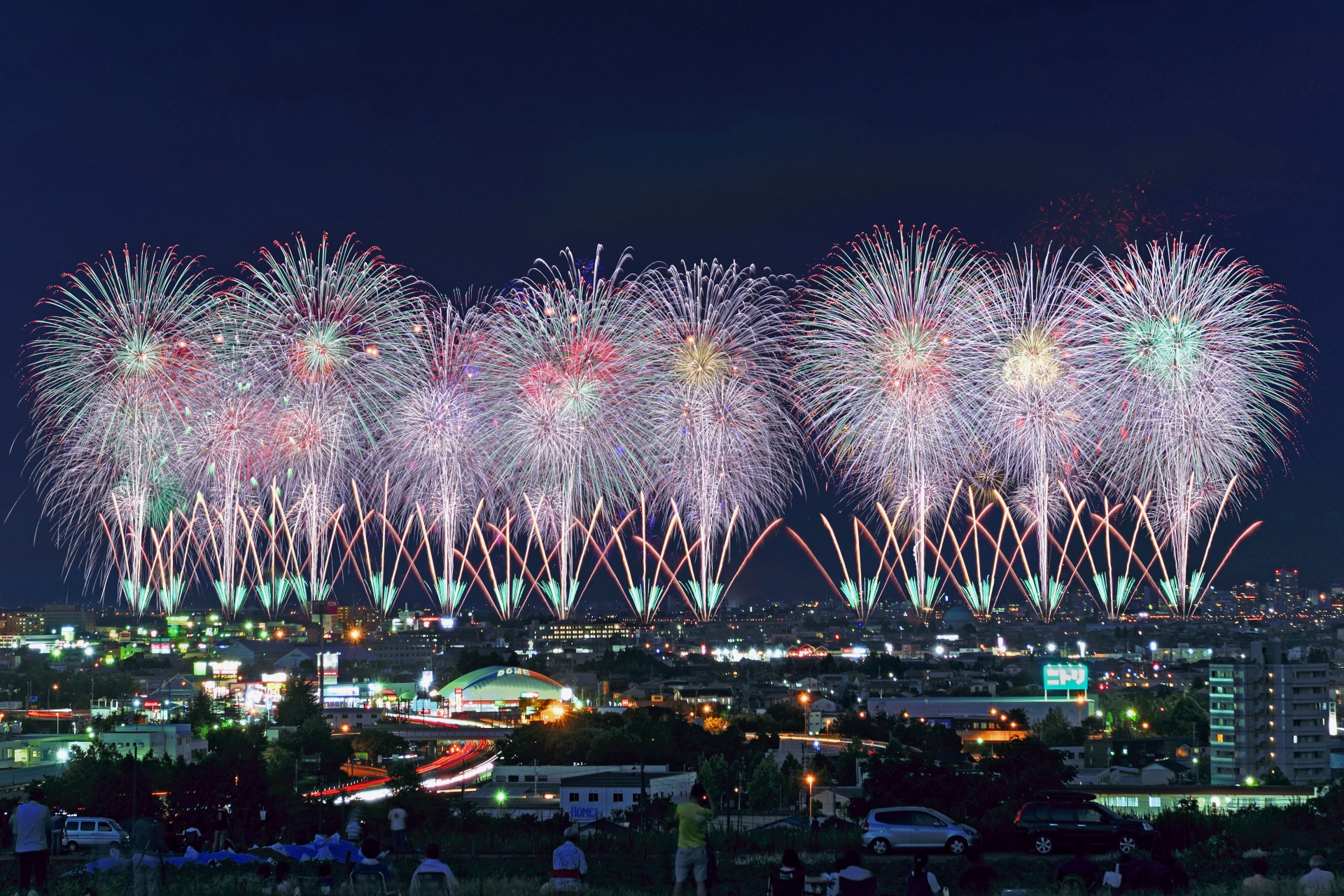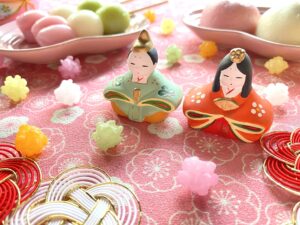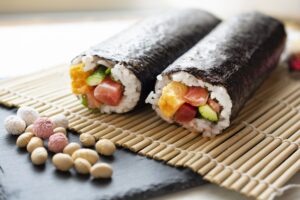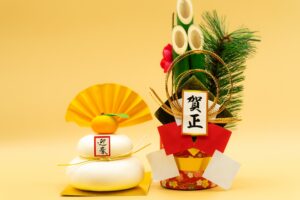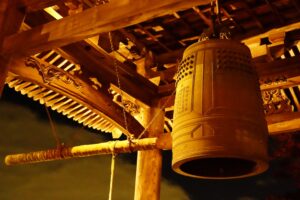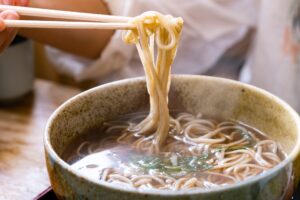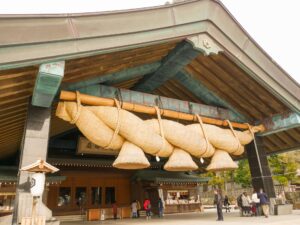Hanabi, or fireworks, are one of Japan’s most beloved summer traditions. Every year, thousands of fireworks light up the night sky in spectacular displays, drawing millions of spectators to festivals across the country. These vibrant explosions are not just for entertainment; they carry deep cultural significance, celebrating peace, remembrance, and togetherness. Whether you’re a tourist planning to attend your first festival or a cultural enthusiast curious about Japanese traditions, this guide will help you dive into the world of Hanabi.
The History and Cultural Significance of Hanabi
Hanabi in Japan dates back to the early 18th century during the Edo period. Originally, they were part of a Buddhist ritual meant to honor the souls of the deceased. Over time, fireworks evolved into a form of entertainment enjoyed by the masses, becoming an integral part of summer celebrations.
The word hanabi itself means “fire flower” (花火), symbolizing fleeting beauty, much like cherry blossoms. These displays are often seen as a reflection on the impermanence of life, reminding viewers of the transient nature of beauty and existence. Some of Japan’s most famous festivals, such as the Sumida River Fireworks Festival, have their roots in these ancient traditions. Today, hanabi are synonymous with summer, community, and the celebration of peace, often used to mark the end of summer festivals or as part of national events like festivals for Obon, a time for honoring the spirits of ancestors.
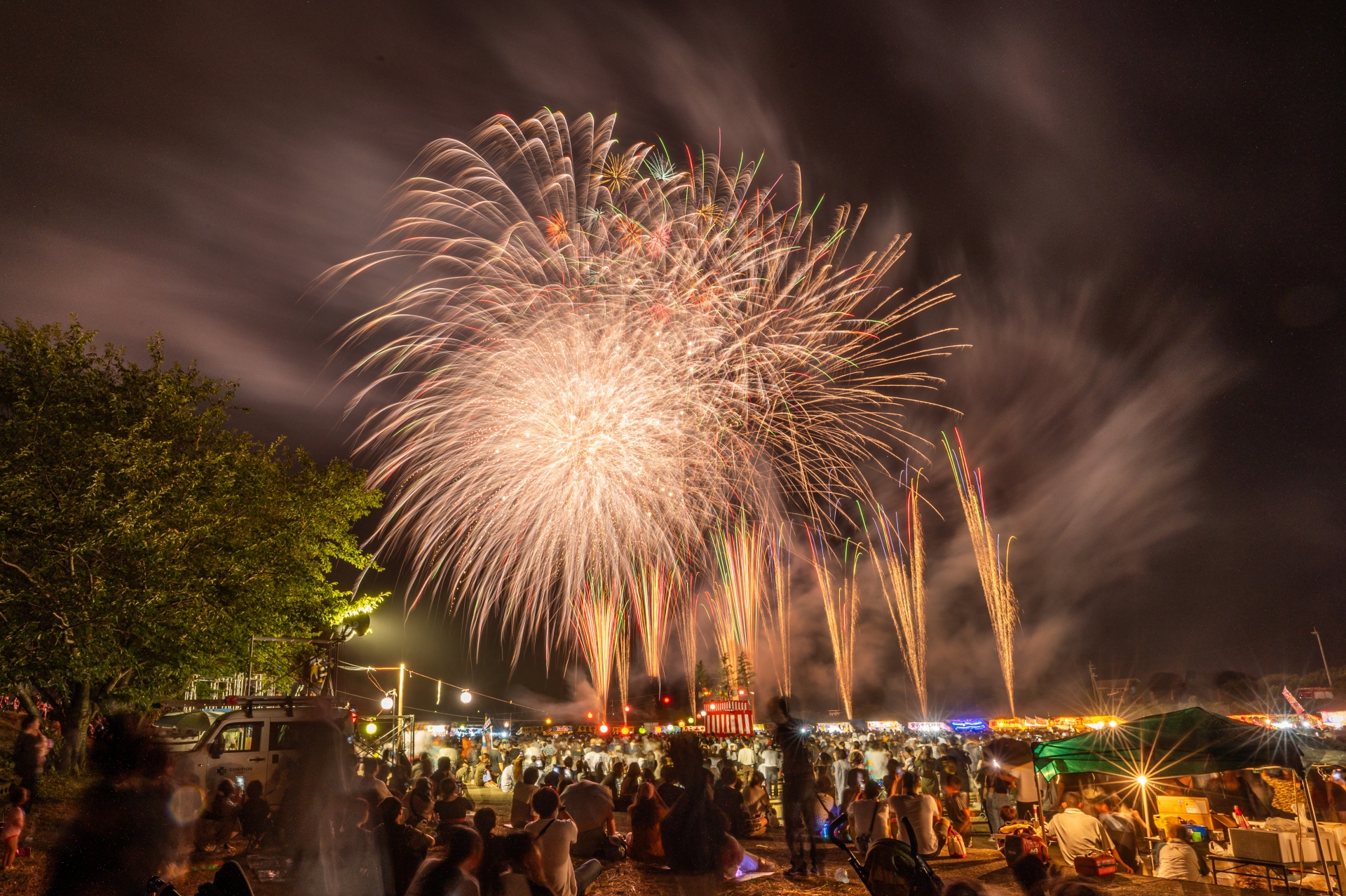
The Best Fireworks Festivals in Japan
Japan hosts numerous Hanabi festivals throughout the summer and early autumn, each with its unique charm, history, and visual splendor. Below are some of the most famous and awe-inspiring fireworks festivals in Japan:
1. Omagari National Fireworks Competition (Akita)
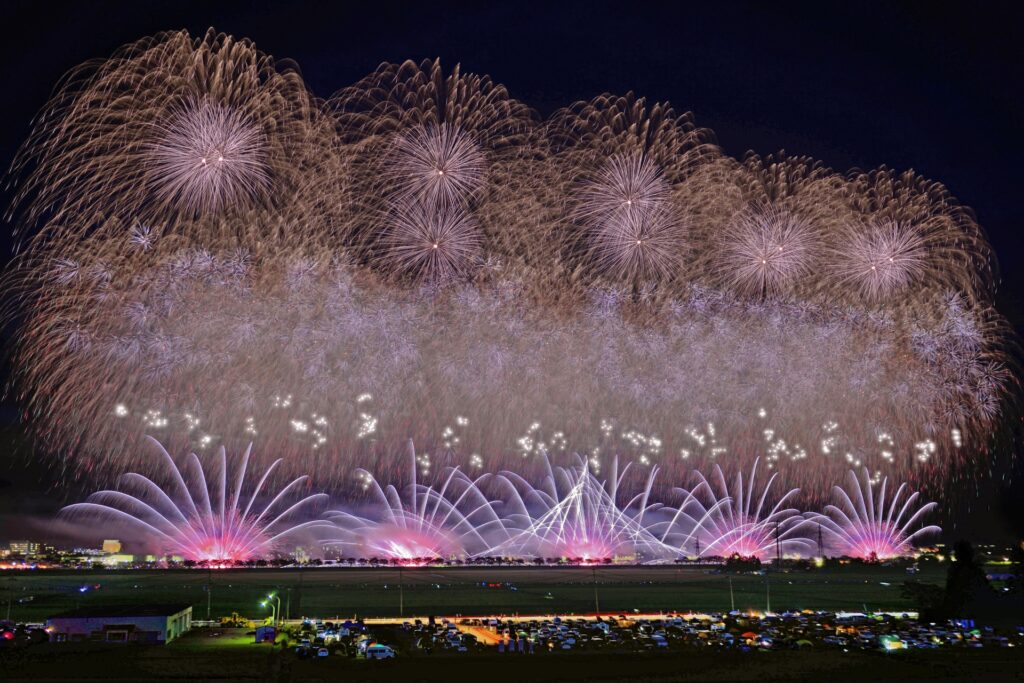
Taking place in late August in Daisen, Akita Prefecture, the Omagari National Fireworks Competition is one of the top fireworks competitions in Japan. It’s a highly prestigious event where the nation’s best pyrotechnicians come to compete, showcasing their most innovative and artistic designs.
Unlike typical festivals, this is a competition judged on criteria such as color, creativity, and overall performance. More than 18,000 fireworks are launched, and the variety is astounding, with everything from traditional starbursts to intricate shapes and patterns. The competition’s focus on artistry makes it a favorite among fireworks enthusiasts and professionals alike.
2. Tsuchiura All Japan Fireworks Competition (Ibaraki)

Held annually in October, the Tsuchiura All Japan Fireworks Competition is one of Japan’s three major fireworks competitions, along with Omagari and Akita. This event, which takes place on the banks of the Sakura River in Tsuchiura, is known for pushing the boundaries of pyrotechnic art.
The competition attracts Japan’s top fireworks artisans, who debut new techniques and designs. It features over 20,000 fireworks, with categories like “Starmines” (rapid-fire sequences), “Creative Fireworks,” and the technical brilliance of single-shot fireworks, called shakudama, which can reach a diameter of 500 meters in the sky. The festival’s October date means it marks the end of Japan’s fireworks season, making it a grand finale for Hanabi lovers.
3. Nagaoka Fireworks Festival (Niigata)

Held in early August, the Nagaoka Fireworks Festival is famous for its large-scale, emotionally resonant displays. It started in 1946 as a symbol of recovery after World War II, and since then, the event has come to represent peace and hope for the future.
The festival’s signature firework is the “Phoenix,” a massive display meant to inspire resilience and renewal. This two-day event features over 20,000 fireworks, including some of the largest shells in Japan, which explode into vibrant blooms across the sky. The festival is held along the Shinano River, offering spectators a stunning view of the reflections in the water, adding to the magical atmosphere.
4. Sumida River Fireworks Festival (Tokyo)
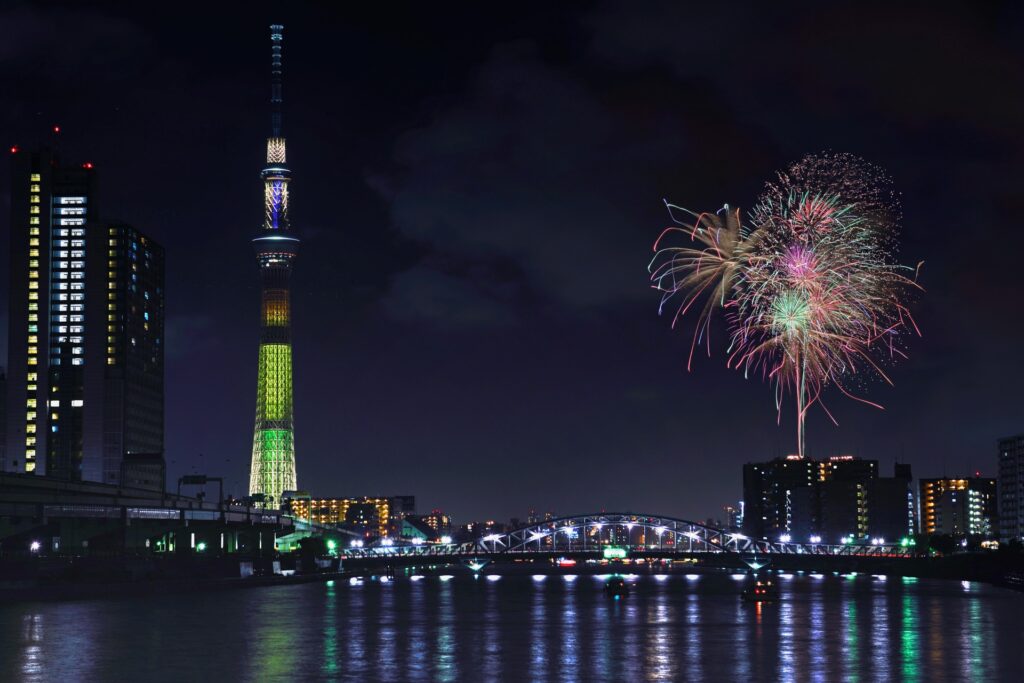
One of the oldest and most prestigious fireworks festivals in Japan, the Sumida River Fireworks Festival dates back to 1733. Originally held to commemorate those lost during a famine, it has since evolved into a celebration of summer. The festival takes place on the last Saturday of July, with fireworks launched from boats on the Sumida River, illuminating the cityscape of Tokyo, including the iconic Tokyo Skytree.
Each year, over 20,000 fireworks light up the sky, drawing more than a million spectators. The festival is known for its competitive nature, where different pyrotechnic companies showcase their best designs. The sheer scale and historical importance of this festival make it one of the most highly anticipated events of the year.
5. Lake Biwa Fireworks Festival (Shiga)
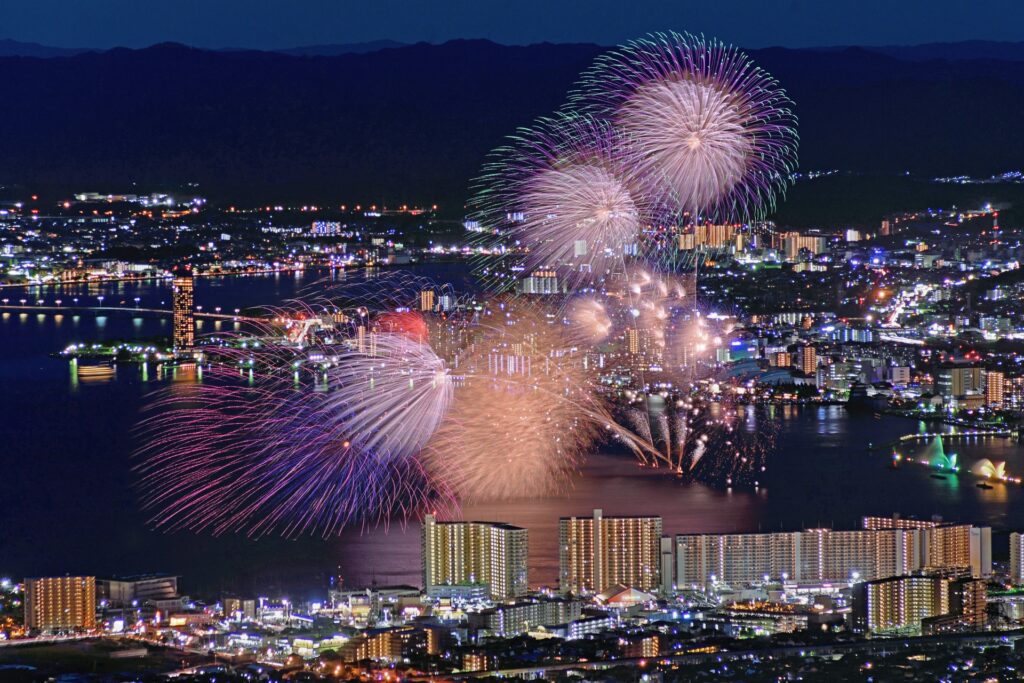
The Lake Biwa Fireworks Festival, held in early August, is a highlight of summer in the Kansai region. Set against the backdrop of Lake Biwa, Japan’s largest freshwater lake, this festival is renowned for the breathtaking reflection of the fireworks on the water’s surface, creating a dual spectacle both in the sky and on the lake.
The show features over 10,000 fireworks, ranging from simple bursts to elaborate, multi-stage displays. The lakeside location also provides plenty of open space for spectators, allowing them to fully enjoy the grandeur of the event. The festival is a perfect blend of nature and pyrotechnics, making it one of the most scenic fireworks displays in Japan.
6. Miyajima Water Fireworks Festival (Hiroshima)
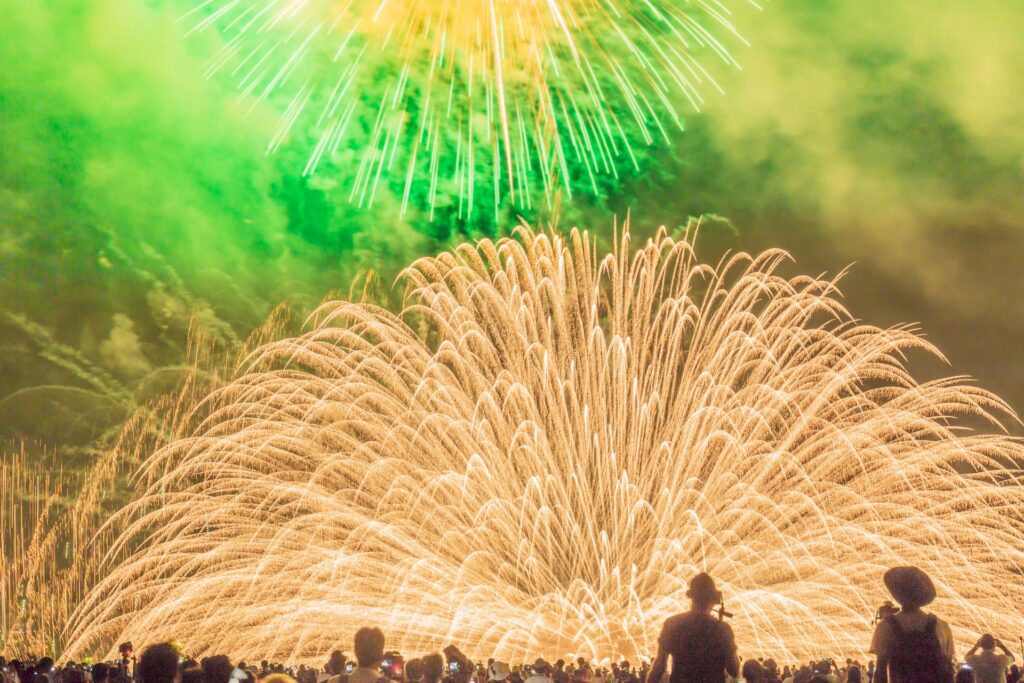
Held in mid-August, the Miyajima Water Fireworks Festival is famous for its unique location on the sacred island of Miyajima, home to the UNESCO World Heritage site, Itsukushima Shrine. What makes this festival particularly special is that the fireworks are launched over the water near the shrine’s iconic “floating” Torii gate.
The combination of vibrant fireworks reflecting off the Seto Inland Sea and the silhouette of the Torii gate creates a surreal, almost spiritual atmosphere. This festival typically features around 5,000 fireworks, but the unique setting amplifies the visual impact. It’s a more intimate festival compared to others, but its spiritual and historical context makes it a must-see.
These festivals typically take place from late July to early August. Visitors can expect large crowds, food stalls selling traditional Japanese festival foods, and an electric atmosphere that captures the spirit of summer in Japan.
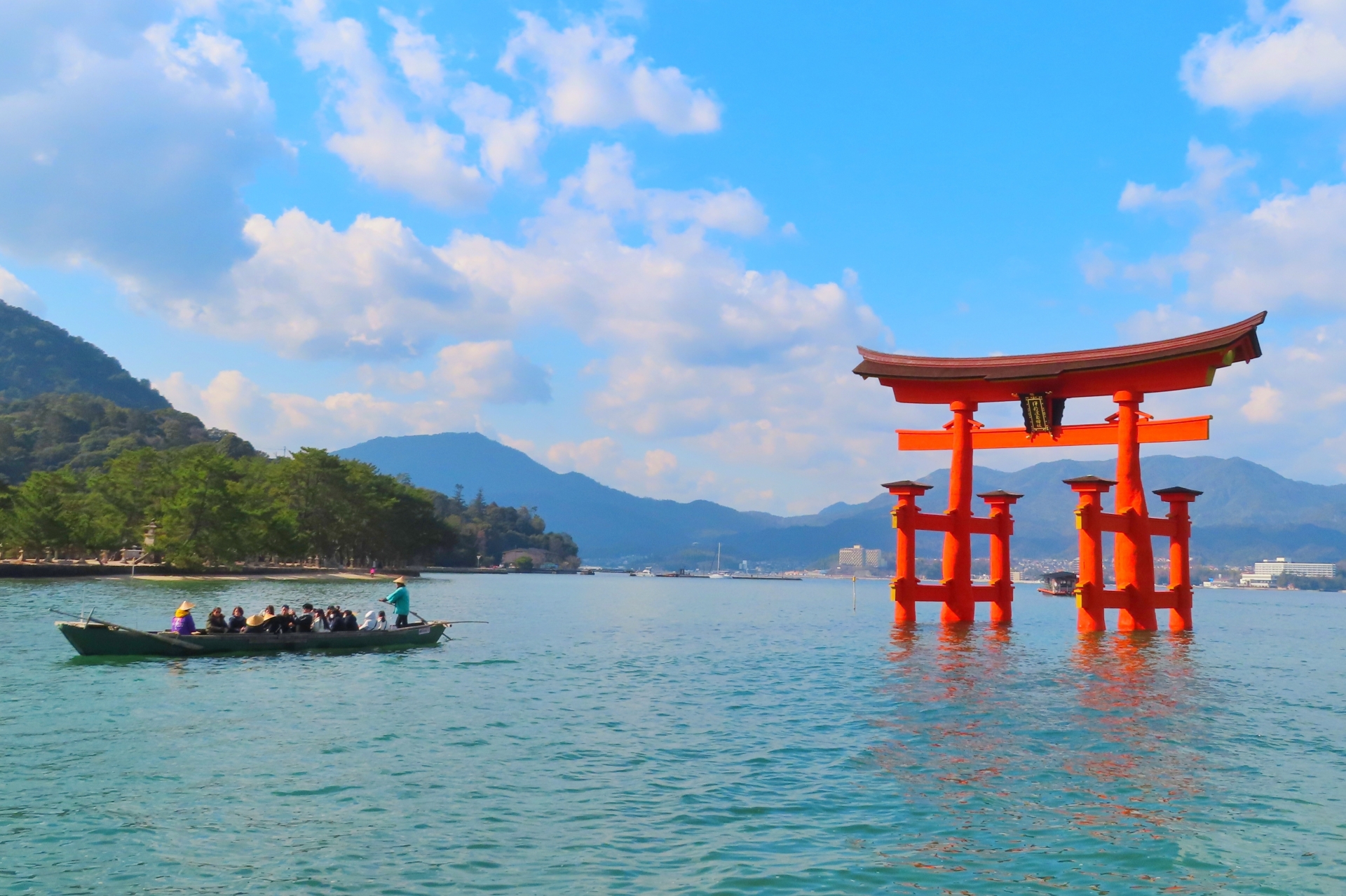
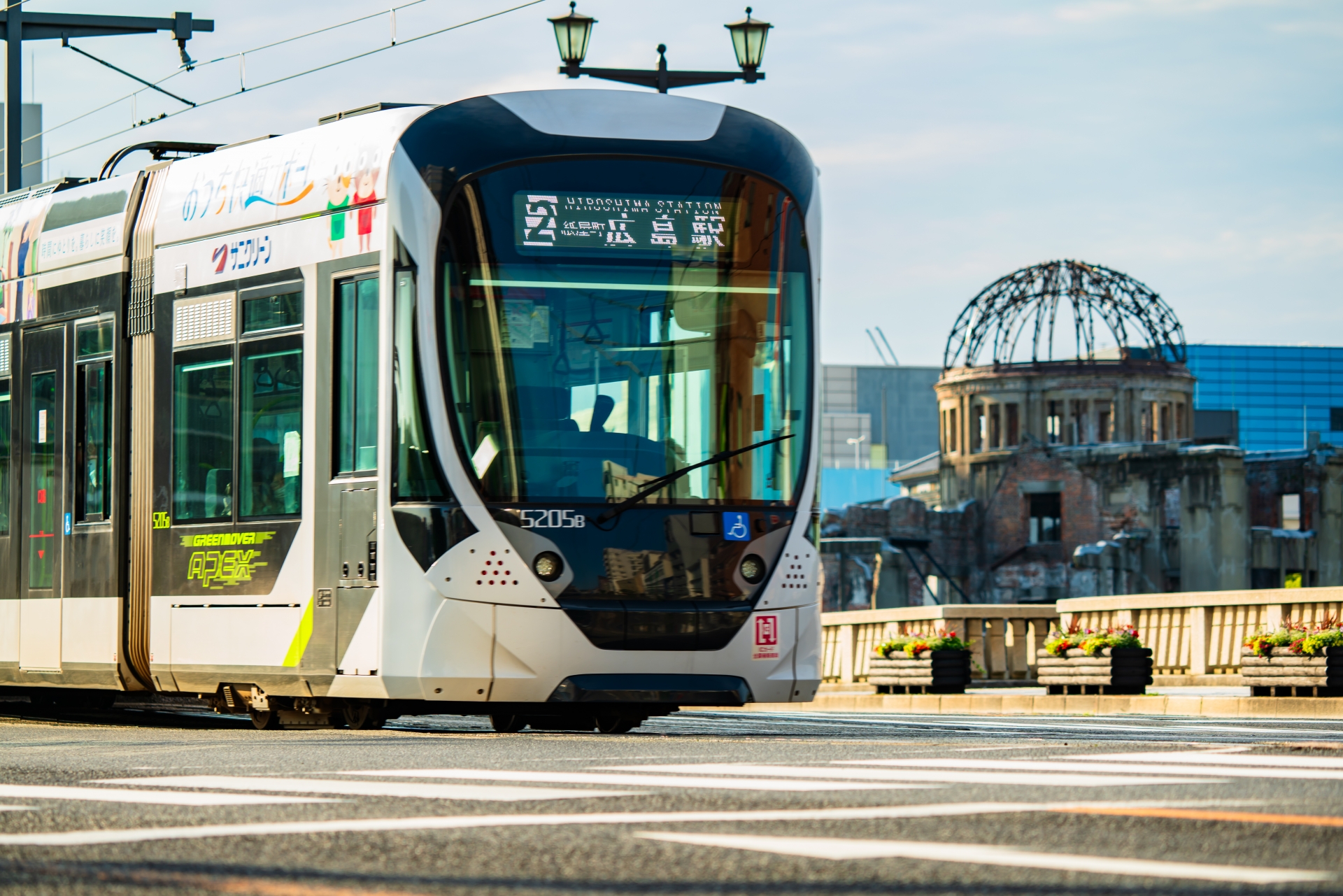
Tips for Attending Hanabi Festivals
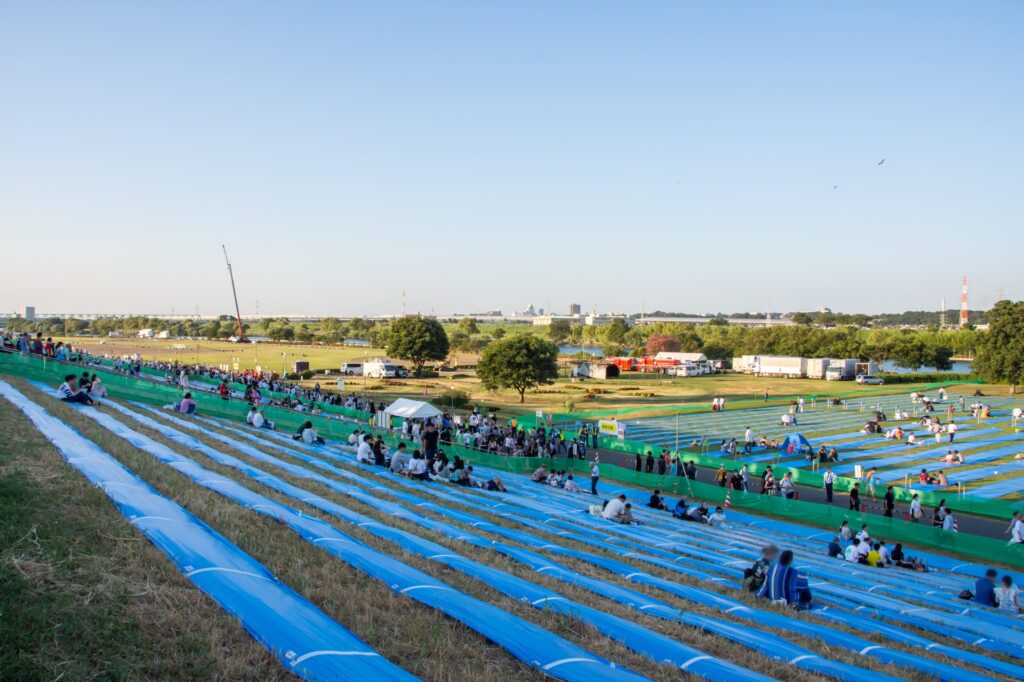
If you plan to attend a Hanabi festival, it’s important to be prepared to make the most of your experience. Here are some tips to help you enjoy the show:
- Arrive Early: Popular festivals attract huge crowds, so arriving several hours early will help you secure a good spot. Many locals lay out picnic blankets early in the day.
- Best Viewing Spots: Research the best locations ahead of time. For instance, the Sumida River festival has several designated viewing areas, but smaller parks and riverside spots can also offer a great view.
- What to Bring: Essentials include a picnic blanket, snacks, and drinks. Many festival-goers bring folding chairs for comfort.
- Dress Comfortably: Japanese summer nights can be humid, so light, breathable clothing is recommended. Many people wear yukata (summer kimono) to festivals.
- Etiquette: Remember to clean up after yourself, as Japanese festivals are known for their tidiness. Respect others’ space and avoid standing in front of seated spectators.
How to Capture the Perfect Fireworks Photo
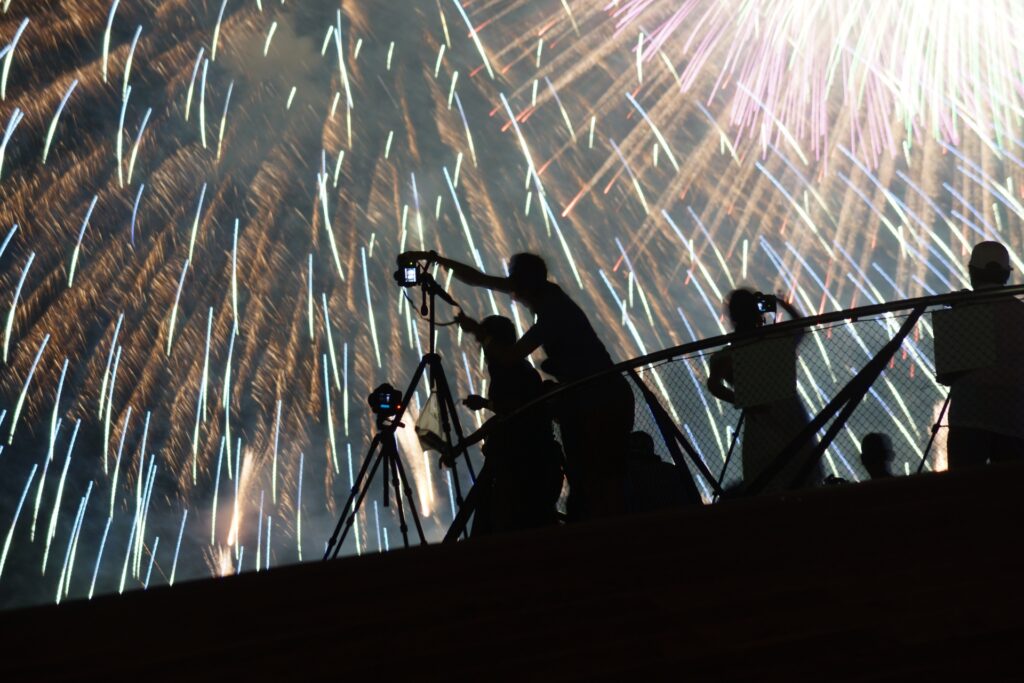
Fireworks can be challenging to photograph, but with a few tips, you can capture the magic of the event:
- Use a Tripod: Stability is key for long-exposure shots. A tripod ensures your camera remains steady, reducing blur.
- Camera Settings: Set your camera to manual mode, with an aperture of f/8 to f/13 and a shutter speed between 4-10 seconds for the best results.
- Choose the Right Spot: Find a location that gives you an unobstructed view of the sky. Avoid being too close to the launching site for a wider view of the display.
Behind the Scenes: How Japanese Fireworks Are Made
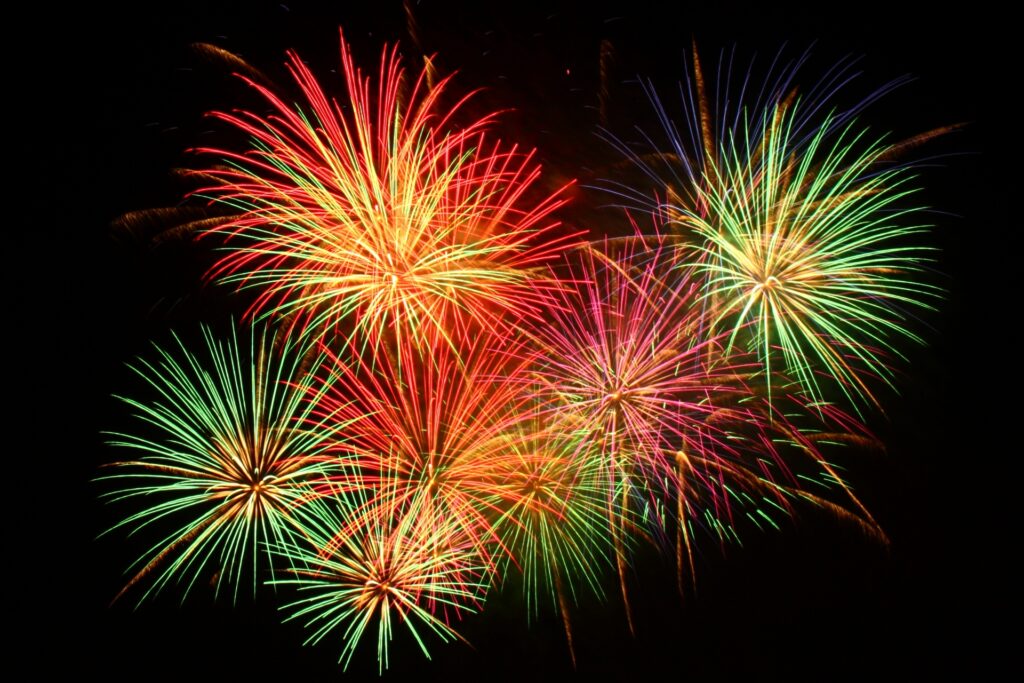
The artistry behind Japanese fireworks is a tradition passed down through generations. Skilled craftsmen, known as hanabi-shi, painstakingly design and handcraft each firework, blending traditional techniques with modern innovations. The intricate designs and vibrant colors that light up the sky are the result of a deep understanding of chemistry, art, and timing.
The process of creating fireworks involves layering different chemicals and metals to produce specific colors and effects. Red comes from strontium, yellow from natrium, green from barium, and blue from copper. In recent years, Japanese fireworks makers have introduced complex designs, such as characters, flowers, and even smiley faces. Many of these innovations are showcased at competitions like the Omagari National Fireworks Competition.
Environmental Impact and Future of Fireworks in Japan
While Hanabi festivals are a beloved tradition, there is growing concern about their environmental impact. The chemicals used in fireworks can contribute to air and water pollution, and the large crowds can leave behind significant waste.
Some festivals are taking steps towards sustainability by using eco-friendly fireworks made from biodegradable materials or reducing the amount of smoke produced. In the future, we may see more festivals adopting these measures to preserve both the environment and the tradition of Hanabi.
Conclusion
Hanabi is more than just a fireworks display—it is a reflection of Japan’s history, culture, and community spirit. Whether you’re attending one of the famous festivals or learning about the intricate craftsmanship behind the fireworks, the experience of Hanabi is sure to leave a lasting impression.

